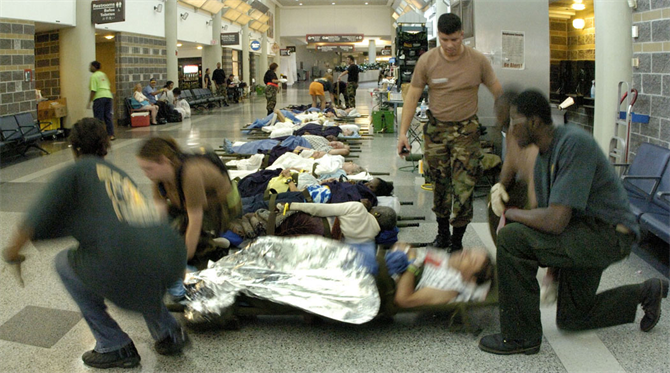Long-Term Investments Critical for Healthy Recovery
Too often those fortunate to survive a disaster are not immediately able to return to their typical lives. Crippling post-disaster health concerns include mental and psychological issues, communicable diseases, and toxin-related health concerns. Compromised healthcare systems and damaged infrastructure often leave survivors without access to medications and services. Mental Health Challenges In the case of […]


Too often those fortunate to survive a disaster are not immediately able to return to their typical lives. Crippling post-disaster health concerns include mental and psychological issues, communicable diseases, and toxin-related health concerns. Compromised healthcare systems and damaged infrastructure often leave survivors without access to medications and services.
Mental Health Challenges
In the case of Hurricane Katrina, a study conducted by the Centers for Disease Control and Prevention found that though a quarter of respondents lived with someone who needed mental health counseling, fewer than two percent received such care. Another CDC assessment found that one-fifth to one-quarter of New Orleans police officers had symptoms of PTSD or depression three months after the flood; suicide rates also spiked in New Orleans during this period. Six months after extreme flood conditions in Mexico in 1999, a quarter of the affected population still had symptoms of trauma or depression. Increased rates of both could still be detected up to two years later.
Communicable Diseases Impact
Communicable diseases can also torment impacted areas following disaster situations. Population displacement and a lack of access to personal hygiene facilities and safe water create perfect conditions for outbreaks of communicable diseases. Along with diseases that were present experiencing a resurgence, those previously under control can become problematic as well.
After Haiti suffered from a 7.0 magnitude earthquake in January 2010, the country was flooded with aid workers. The following October Haiti endured a cholera epidemic brought over by the foreign aid workers killing over 10,000 people and sickening hundreds of thousands more. Imported cases caused an outbreak in Haiti where they had not seen cholera in over a century.

Asbestos and Lead Exposure
The release of toxins is yet another long-term issue that afflicts disaster stricken areas. The damage sustained during natural disasters such as hurricanes, fires, tornadoes, and floods can result in homes and commercial buildings requiring serious repairs. Many structures – particularly old ones in impoverished areas that do not have the funds for abatement – contain toxins like lead and asbestos. Structural damage during natural disasters may cause the harmful particles to become friable, airborne, and inhaled by people as well as pets.
Once inhaled or ingested, toxins can cause a multitude of health problems. For example, lead exposure can result in lead poisoning, which is especially harmful for children, and asbestos particles could develop into mesothelioma cancer. The only prevention to toxin related health issues is limiting exposure, so inspection and restoration of homes before returning following a disaster is paramount.
Families face a burden of abatement costs and the requirement to find alternate housing while waiting for a professional to inspect their home that could take months to a year to occur. Additionally, specialists, like mesothelioma oncologists, are often required for treatment, so a full recovery of the medical services system is imperative.
Long-Term Funding for Healthy Recovery
Virtually all disaster-related giving stops within three months following a catastrophic event. It’s not until well after that window shuts that the full impact of the disaster can be seen and dealt with. The true effects of disasters on mental and physical health can take months or even years before they are fully understood.
People will be recovering from the recent devastation from Hurricane Harvey for at least three years and even longer from Hurricane Maria because of the duration and intensity of the storm. Keep that in mind when considering the importance of giving when it seems the disaster is over.
More like this
Identifying Hurricane Sandy’s Unmet Needs

